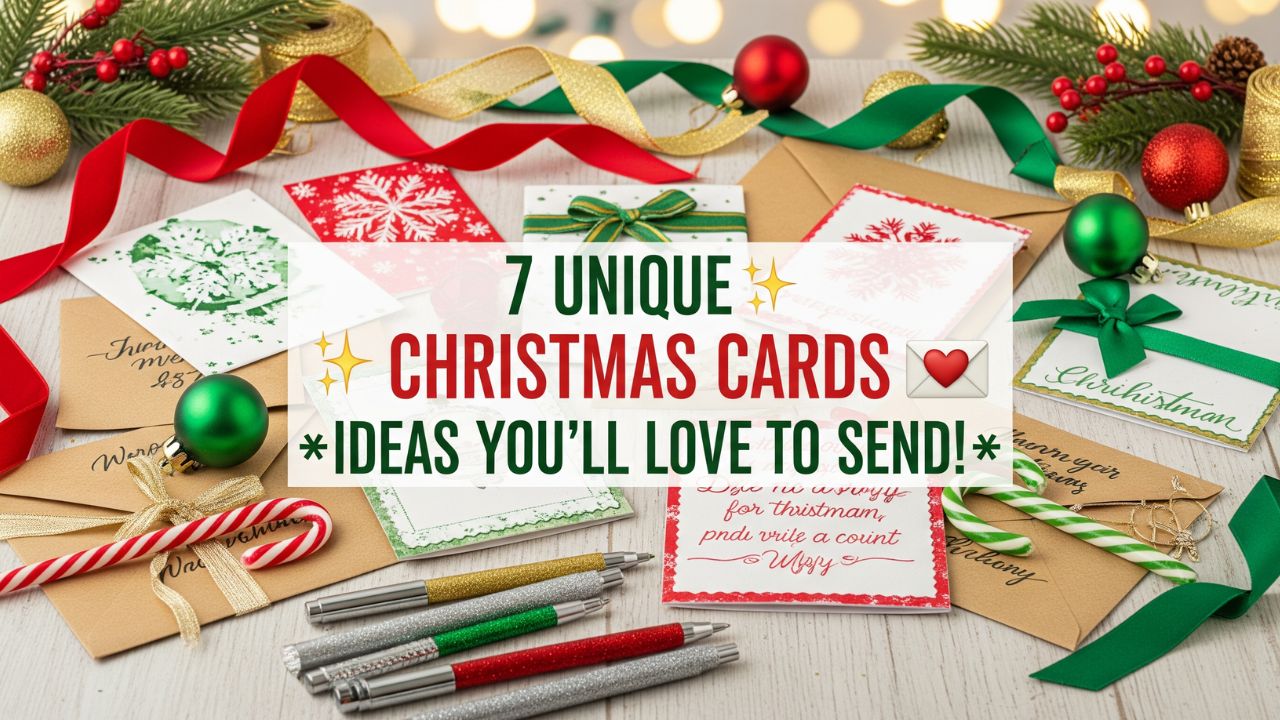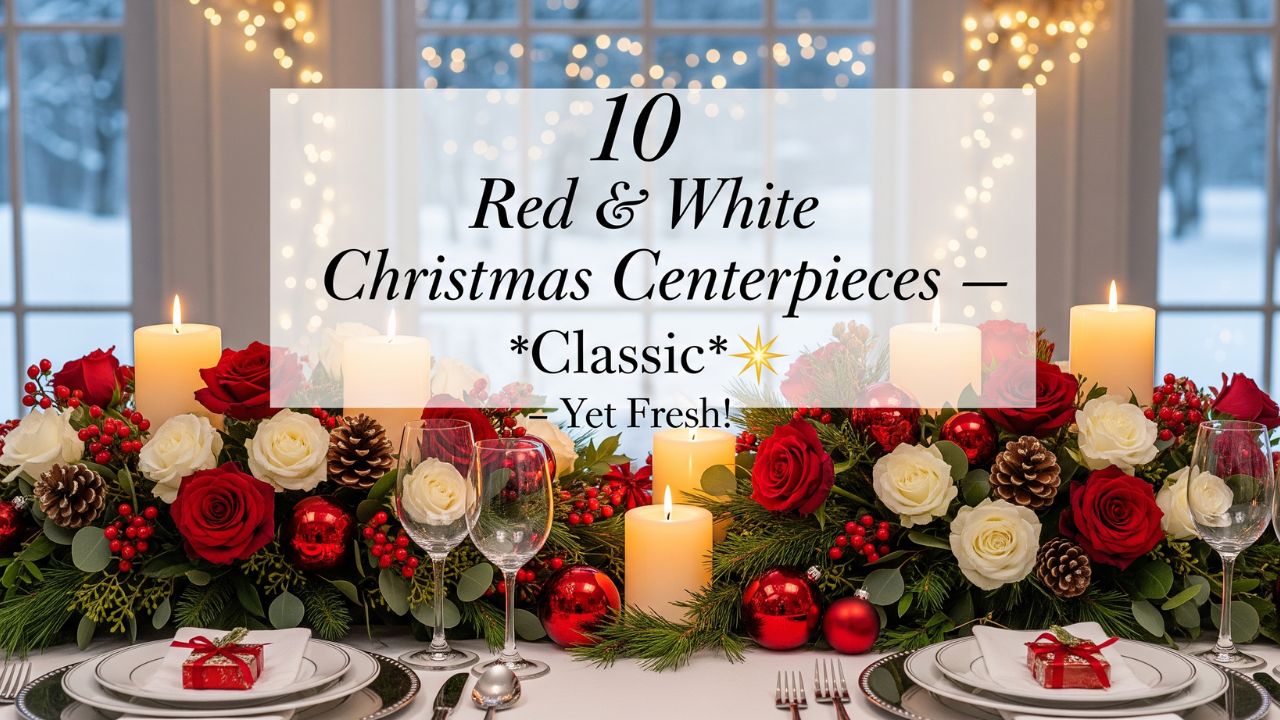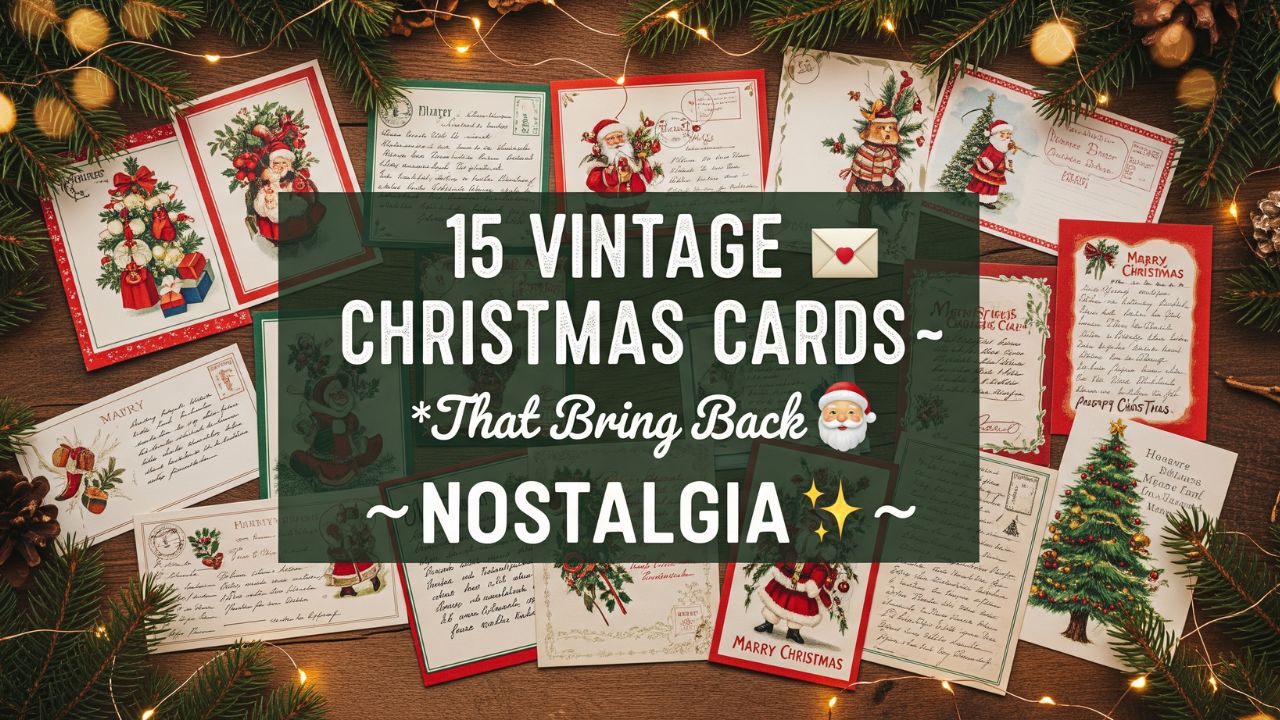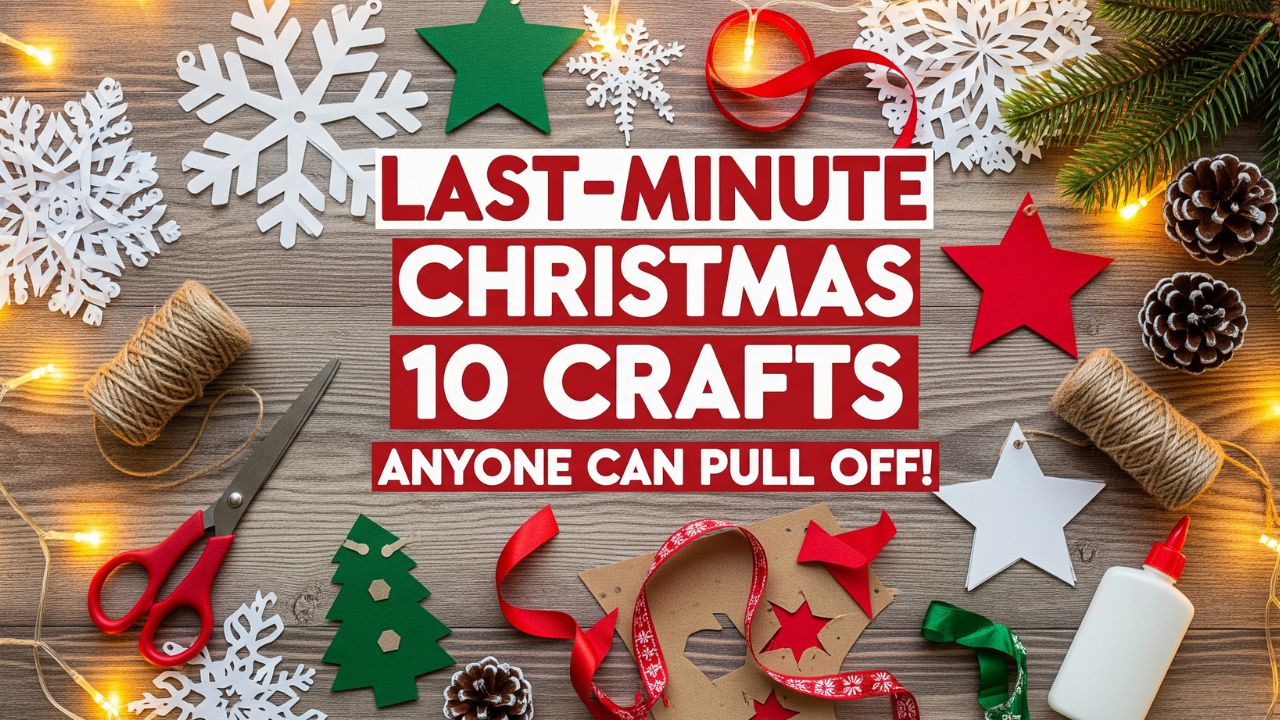There’s something about vintage Christmas cards that makes time slow down. The yellowed edges, hand-painted snow scenes, and delicate typography carry more than just ink — they hold memories. Long before text messages and digital e-cards, these little works of art were a way to say “I care” across miles.
Back then, sending a Christmas card wasn’t just a formality — it was an event. People waited eagerly for the postman, opened envelopes with anticipation, and displayed cards proudly on mantels or walls. The act itself was a gesture of warmth, love, and connection.
Do you know? The very first Christmas card was printed in 1843 — the same year Charles Dickens published A Christmas Carol. It was designed by artist John Callcott Horsley and commissioned by Sir Henry Cole, who also helped introduce the modern postal system in Britain. That one card sparked a global tradition that still continues today.
In this post, we’re diving into 15 vintage Christmas cards that transport you straight back to those golden years — when handwritten notes and nostalgic designs meant more than any store-bought gift.
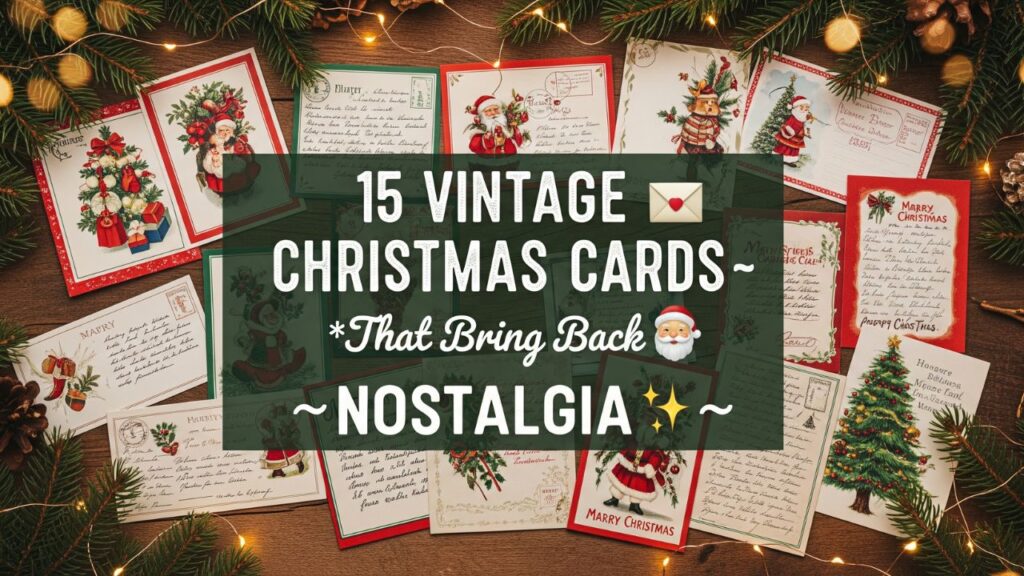
Table of Contents
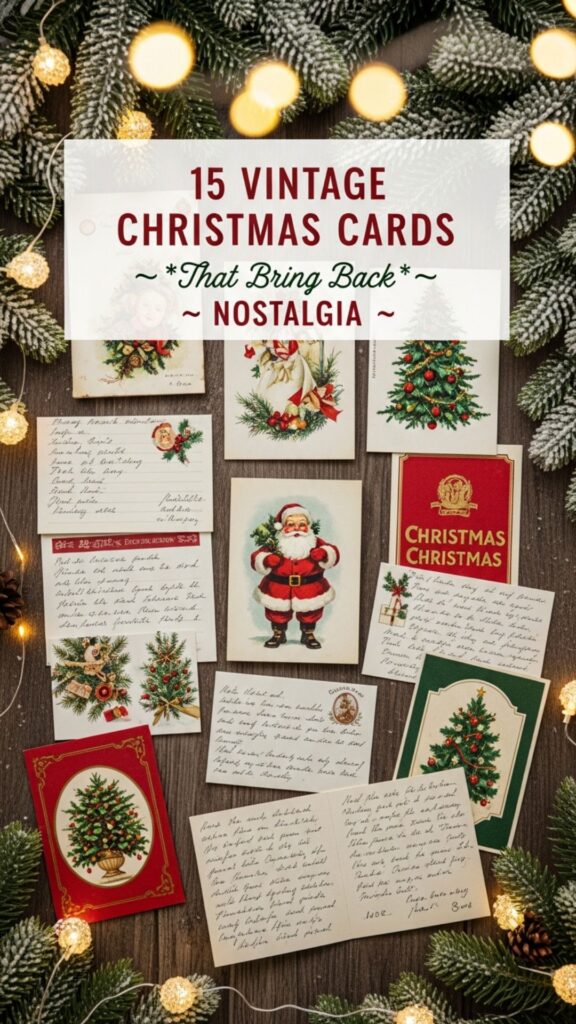
15 Best Vintage Christmas Cards
1. The Victorian Classic: Angels and Holly

When Christmas cards first became popular in the late 1800s, angels and holly dominated the designs. These cards often showed cherubic angels hovering above snowy churches or glowing candles.
Victorians loved symbolic imagery — holly represented eternal life, while angels symbolized protection. A card like this wasn’t just decorative; it carried a blessing.
Interesting fact: Some early cards didn’t even feature Christmas themes! Instead, they displayed spring flowers or humorous sketches. It wasn’t until later that festive icons like holly and mistletoe became standard.
2. The Post-War Peace Dove

After World War II, card designs shifted dramatically. The world had seen chaos, and peace became the ultimate wish. Enter the dove carrying an olive branch — a universal symbol of hope.
These post-war cards are emotionally powerful. They reflect a generation yearning for calm and unity after years of turmoil. The minimal design and muted colors were a stark contrast to the lavish illustrations of the previous era.
Do you know? In 1945, Hallmark sold out its entire run of “Peace on Earth” cards within days. It marked one of the first times greeting cards became a national statement of collective emotion.
3. Santa Through the Decades
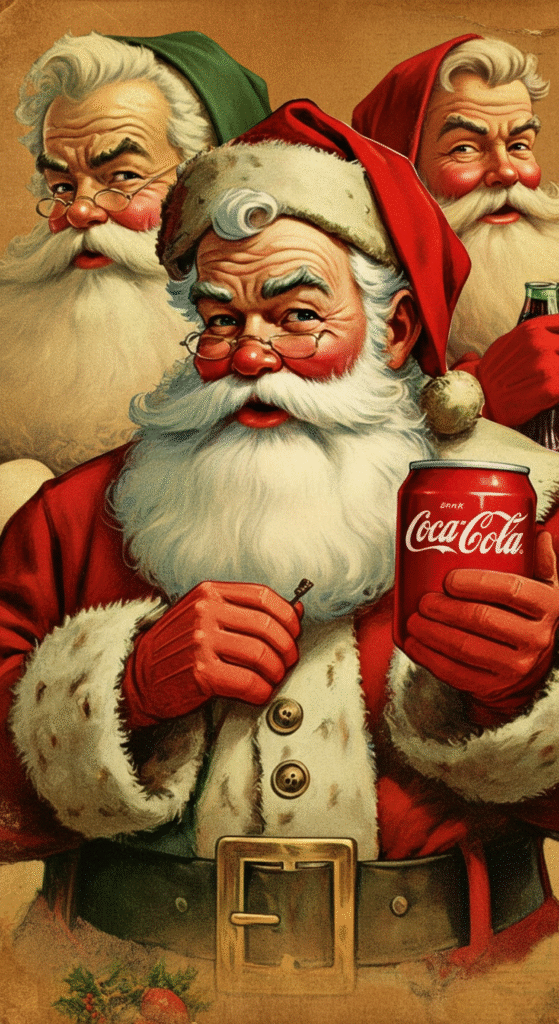
Santa’s image evolved dramatically across eras — from stern bishop to jolly grandpa. Vintage cards often reveal how marketing and art shaped the modern Santa we know today.
In the 1920s and ’30s, artists depicted Santa in red robes trimmed with fur, inspired by Coca-Cola’s advertising art. But earlier cards from the 1800s showed him wearing tan, blue, or even green coats!
Myth alert: Coca-Cola didn’t actually invent Santa’s red suit — they simply popularized it. The color red had already been used in illustrations decades earlier, but their ads cemented the modern image in pop culture.
4. The Snow-Covered Cottage Scene
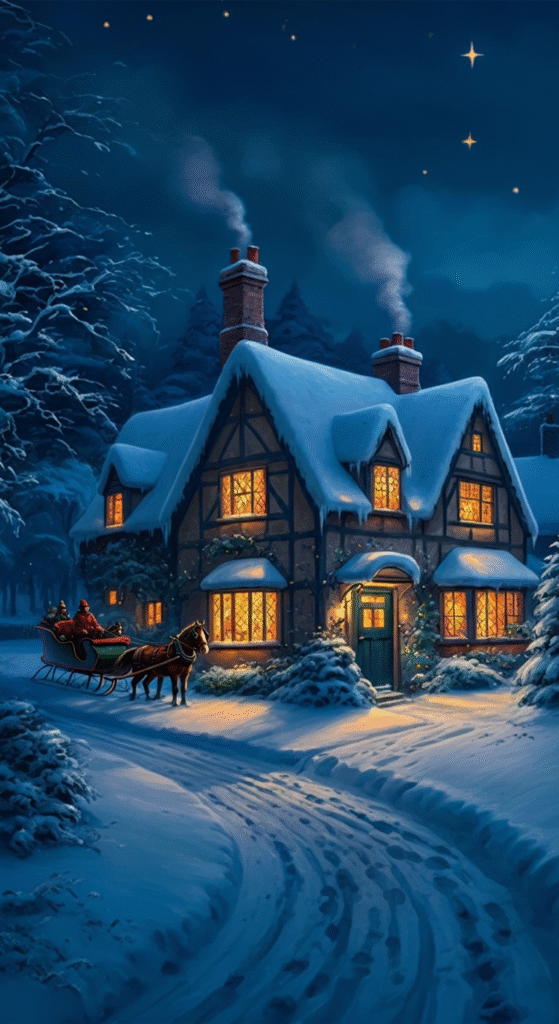
Few things evoke Christmas nostalgia like a quaint snow-covered cottage, smoke curling from the chimney, and soft golden light glowing from the windows.
These cards captured the warmth of home and the charm of simple living. Even city dwellers longed for that idyllic countryside scene — a dream of peace and belonging.
Interesting fact: Artists like Charles Robinson and Ethel Parkinson were known for painting these picturesque rural landscapes that dominated cards between 1900–1930.
5. The Child’s Christmas Dream

Vintage cards often featured children marveling at Christmas trees, holding candles, or peeking through frosted windows. These scenes symbolized innocence, wonder, and the joy of anticipation.
The post-Edwardian era especially romanticized childhood as a time of purity. The message was clear — Christmas was meant to be seen through a child’s eyes.
Do you know? In early 20th-century cards, children were often dressed in Victorian winterwear — bonnets, fur muffs, and lace boots — to emphasize charm and warmth.
6. The Art Deco Masterpieces

The 1920s and ’30s brought in sleek geometry, bold typography, and metallic tones — the Art Deco era. Christmas cards followed suit with sharp lines and glamorous gold accents.
These cards marked a move away from rural imagery to urban elegance. Snowflakes became stylized, stars symmetrical, and Santas looked almost cinematic.
Interesting fact: Many Art Deco cards were screen-printed or embossed using gold leaf — techniques considered luxury at the time. Collectors today prize them for their craftsmanship.
7. The Hand-Tinted Photograph Card

Before color printing became affordable, many families sent hand-tinted photo cards — black-and-white portraits painted with pastel tones.
This personal touch made each card unique. Families would pose formally, sometimes with their Christmas tree or pets, and mail these keepsakes to relatives.
Do you know? Early photographers used watercolor dyes to tint cheeks, add color to clothing, and even paint fake snow onto photos — all by hand.
8. The War-Time Morale Card

During both World Wars, Christmas cards played a huge role in boosting morale. Soldiers received illustrated postcards with messages like “Keep Smiling for Victory” or “Christmas Across the Miles.”
These cards often depicted soldiers in snowy trenches or families waiting by the fire. They were sentimental and patriotic — symbols of hope that the next Christmas would be spent together.
Interesting fact: The Red Cross and YMCA distributed free cards to troops so every soldier could send home a message of love and reassurance.
9. The Mid-Century Modern Magic
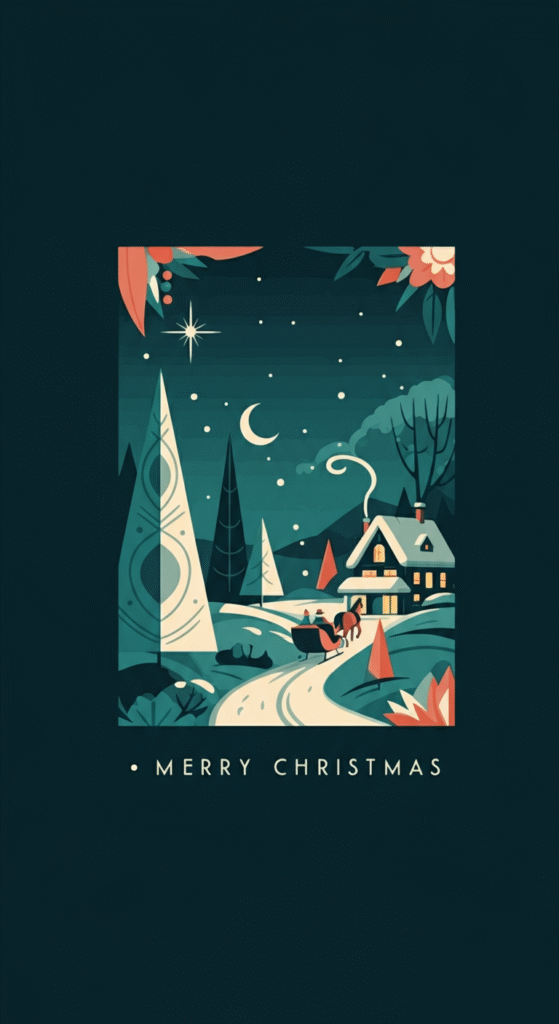
The 1950s ushered in a new aesthetic — bold colors, playful fonts, and abstract shapes. Snowflakes looked like atomic bursts, and Christmas trees became geometric symbols of joy.
These mid-century cards reflected optimism and progress. They felt cheerful, futuristic, and distinctly American.
Do you know? Hallmark introduced die-cut and pop-up cards in this era, adding a sense of novelty and interactivity that kids adored.
10. The Religious Reverence Card
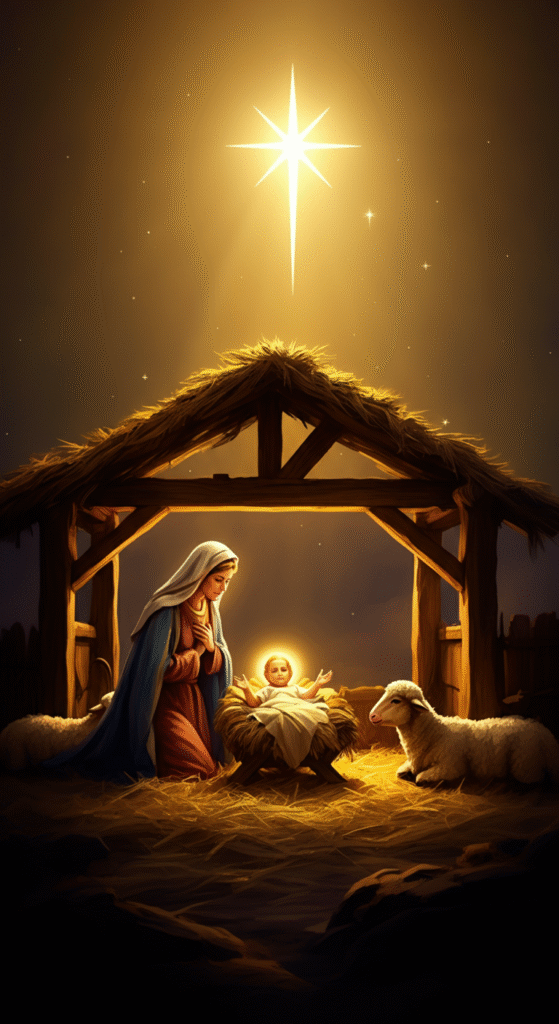
While commercial imagery dominated the West, religious cards held deep meaning for many families. The Nativity scene, the Three Wise Men, and the Star of Bethlehem remained timeless.
These cards reminded recipients that Christmas was more than gifts and tinsel — it was about faith, gratitude, and reflection.
Interesting fact: In the 19th century, religious cards often contained Bible verses in Gothic calligraphy and were sent not just during Christmas, but also during Easter and New Year.
11. The Glitter-Laden Greetings

When glitter hit the market in the 1930s, Christmas cards became dazzling. Manufacturers sprinkled glitter dust over snow scenes, ornaments, and angels to add sparkle and magic.
It was a small innovation with a big emotional impact. Suddenly, cards shimmered like freshly fallen snow.
Do you know? Early glitter was made from ground glass, not plastic. So yes — vintage glitter cards were literally sparkling with real glass dust!
12. The Santa Postcard Craze
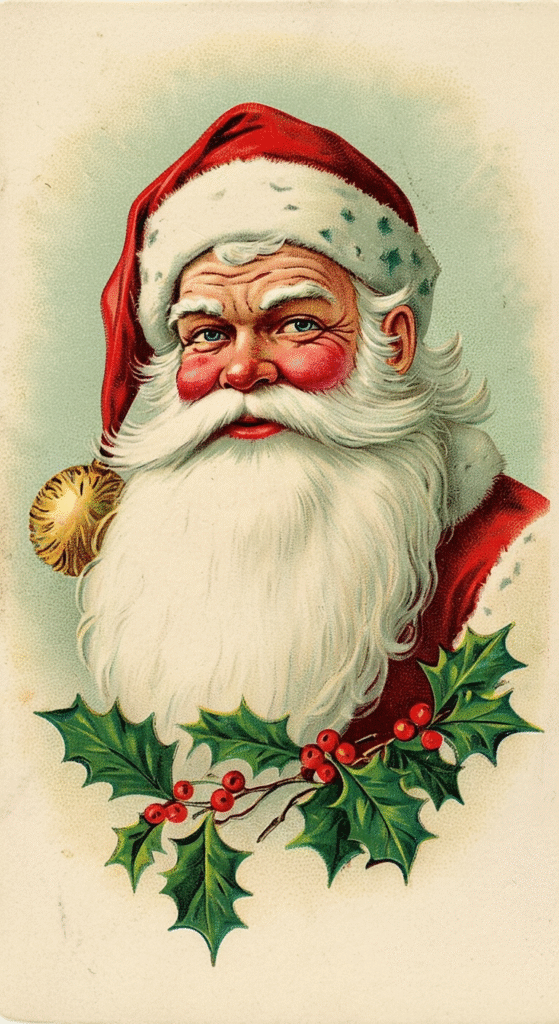
Before folding cards became the norm, postcards were the go-to. Between 1905–1915, millions of single-sided Christmas postcards circulated worldwide.
Collectors love these for their vivid artwork and short, handwritten notes on the back. They were affordable, easy to send, and charmingly direct.
Interesting fact: During the postcard boom, German printers dominated the market. Their lithographic techniques produced stunning color gradients unmatched by others.
13. The Humor Card of the 1970s
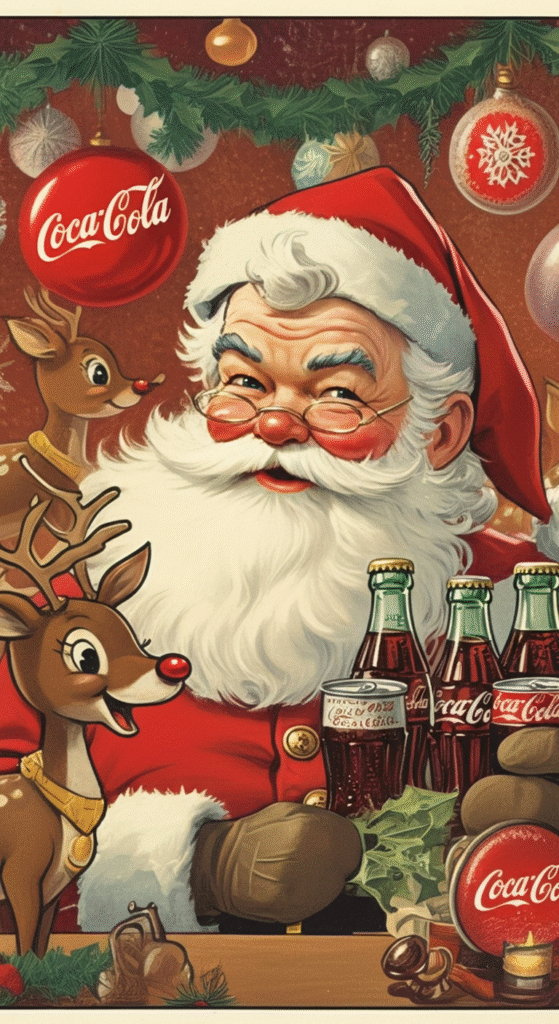
The 1970s brought a burst of humor and kitsch. Think cartoon Santas, funny reindeer, and cheeky one-liners. After decades of tradition, people were ready for something light-hearted.
These cards captured the changing mood of society — relaxed, playful, and a bit rebellious. They became conversation starters more than keepsakes.
Do you know? Some of the most popular cards from this era featured comic strips like Peanuts and Garfield, bridging pop culture with holiday spirit.
14. The Handmade Sentiment Card

Even before DIY was trendy, people loved making their own cards. A cut-out lace pattern, pressed flowers, or a stitched border — these homemade cards radiated sincerity.
Unlike store-bought versions, handmade cards reflected personal creativity. They weren’t perfect, but that was the point — they carried heart.
Interesting fact: During the Great Depression, many families crafted homemade Christmas cards because store-bought ones were too expensive. It revived the tradition of handmade artistry.
15. The Minimalist Revival Card
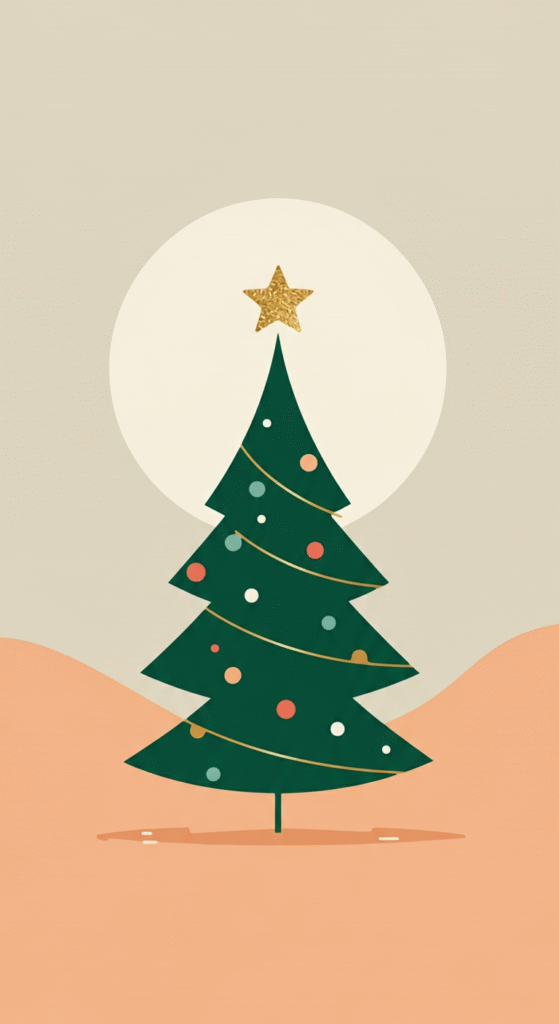
By the 1980s and ’90s, minimalism returned. Artists stripped away excess glitter and bright patterns, focusing on typography and symbolism — a simple star, a candle, a single tree.
These cards felt calm and timeless, echoing the early traditions while embracing modern design.
Do you know? Collectors consider this late-century simplicity a turning point — it paved the way for the sleek aesthetic of today’s boutique greeting cards.
The Nostalgic Value of Vintage Christmas Cards
What makes vintage cards so captivating is their emotional resonance. Each design tells a story about its time — wars, peace, prosperity, faith, art, and family. They’re miniature history lessons wrapped in festive color.
In a digital age where communication is instant but often impersonal, these cards remind us of something profound: slowness has meaning. Writing by hand, sealing an envelope, waiting for a reply — these were acts of thoughtfulness.
Collecting or displaying vintage cards isn’t just about nostalgia. It’s about appreciating craftsmanship, design evolution, and the emotional richness of human connection.
Conclusion
Vintage Christmas cards are more than paper keepsakes — they’re snapshots of humanity’s hopes, joys, and artistry through time. Whether it’s the delicate brushwork of a 19th-century angel or the bold geometry of the 1950s, each card whispers stories from generations past.
So this Christmas, take a moment to look beyond digital greetings. Pull out an old box from the attic, browse an antique market, or recreate a classic design by hand.
Because sometimes, the best way to celebrate the season isn’t with something new — it’s by reviving something beautifully old.
And maybe, just maybe, that one card you send this year will become someone’s keepsake for decades to come.
Frequently Asked Questions (FAQs)
When were the first Christmas cards made?
The first Christmas card was created in 1843 by Sir Henry Cole and artist John Callcott Horsley in England.
Why are vintage Christmas cards so collectible?
They reflect art, culture, and history from their era — each design tells a story, making them valuable to collectors.
What materials were used in old Christmas cards?
Early cards used heavy cardstock, embossed prints, gold foil, and even real glass glitter for decoration.
Are vintage Christmas cards worth money today?
Yes, depending on condition and rarity. Cards from the 1800s to early 1900s can sell for hundreds of dollars.
How can I preserve vintage Christmas cards?
Keep them in acid-free sleeves, away from sunlight and humidity, to prevent fading and damage.
